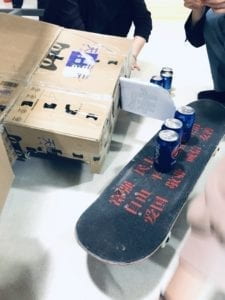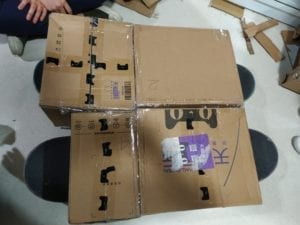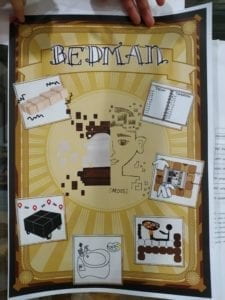My Definition of Interaction
According to Crawford, interaction is a conversation completed by no less than two actors, in which both of them respond to each other (Crawford). There are some features which should be highlighted if you want to call a process interaction. The first feature is that if there is only one actor responding to himself, the process cannot be called interaction. Secondly, the actions of the actors should not be simply reacting. Instead, it should be communicating and responding to each other, clarified by Crawford. In other words, one actor’s respond should be meaningful and can make the other actor respond later on, forming an iterative circle.
Apart from agreeing with Crawford’s definition, I also want to add that, interaction is a process, which follows certain rules. On the one hand, the two actors communicate with each other in the language and principles making sense to either side, so that they can complete a task jointly. On the other hand, another rule guiding the process of interaction is that the task to be complete by actors should have some meaning to the world, such as personal emotion, moral responsibility, and culture insight. According to Crawford, this could be an interaction at a low level.
Two Interactive Projects
The project aligning with my definition of interaction is called “SUN”. It is an installation using sensors to give passersby an interactive experience of watching the sunrise and sunset. Users can change the scenery on the wall and the position of the sun on the wall by raising or dropping the huge physical ball in front of the wall. This project aligns with my definition of interaction. The first reason is that the process of changing the scenery on the wall was completed by many actors, which contains the passerby, the ball, and the sensible wall. Secondly, the actors communicate to each other, since the position of the ball decide the corresponding position of the sun on the wall to change the whole scenery on the wall, including the color of the sky, the sea, and the brightness of the wall. Thirdly, the rule of this process is the FMRI data and sensors on the wall, making each actor understand each other. In addition, this process is meaningful, since it can bring those exhausted people who walk by a sense of relaxation and aesthetics.
The project which does not align with my definition of interaction is called DESCENT. This is an aminated film narrating the Black Death in Europe, and the mediation of the darkest time of humanity. Whatever you click, the computer is indifferent to your order and keep playing those scary and depressing scenes. This interactive project does not align with my definition for interaction, because the only action done by people was downloading the movie and clicking the play. The process is more likely that people listen to the narratives of the computer, instead of communicating and corresponding to each other. If there is some interaction, then it would be people’s playing the film and computer’s being indifferent to people’s order and causing a depressing feeling for people.
Group Project
We decided to get inspiration from the most common but unsolvable problems in our daily life. After discussion, we found out that almost every student is faced with a problem that it is really hard for us to wake up on time. If we wake up late, we will miss the shuttle bus and have to squeeze into the crowded metro without time to wash face or eat breakfast. Therefore, we decided to make a bed to wake people up, drive people to school, and save people’s time for getting prepared.
The name of our project is called Bedman, which embodies an interaction between a human and the bed. We use the package boxes to build this bed, showing that this bed is re-groupable and flexible according to how people want to use it. We bind those boxes with many tapes so that they will not loose. Then we carved many blocks on the boxes so that the wheels of the skateboards can be stretched out. Since the boxes are empty, they will be easily destroyed once our group member sits on it. Therefore, we came up with the idea of filling the boxes with soda tins, so that our “bed” is solid enough. The bed can first of all store the to-do list for people, and the remind people what to do by vibrating at the time set by people. Since the bed is re-groupable and flexible, it can be reshaped into a means of transportation by stretching out two wheels. We used two skateboards provided by Ning to make the bed movable. The box constituting the bed plays a role of a closet to store clothes, toothbrush, and even a hand-washing sink, and a food storing and heating machine as well, so that people can do these things on the way to school or work.
This project responds to my definition of interaction in various ways. First of all, after reminding people to finish a term on the to-do list, it will encourage people to finish the task on time if people want to cancel it. This embodies the feature of interaction that two actors communicate with responding to each other. Secondly, it can finish the order set by people within the range of its capability, such as taking out clothes and toothbrush for people, heat food, and be reshaped into a means of transportation if people ask. Therefore, the two actors communicate in a language which makes sense to both, which can maintain the iterative procedure of this conversation.




References:
Crowford, Chris. “What Exactly Is Interactivity?” The Art of Interactive Design, pp. 1–6. s3-ap-southeast-1.amazonaws.com/ima-wp/wp-content/uploads/sites/3/2017/08/05164121/The-Art-of-Interactive-Design-brief.pdf